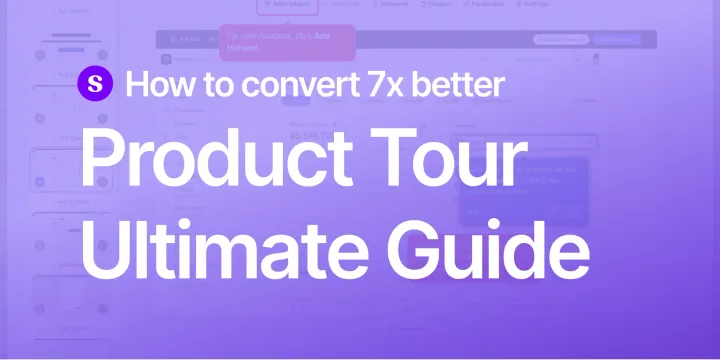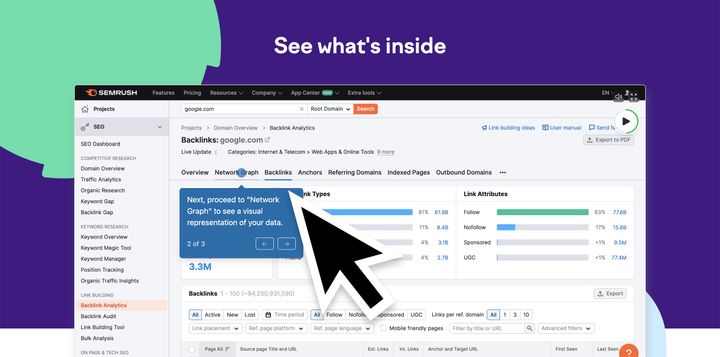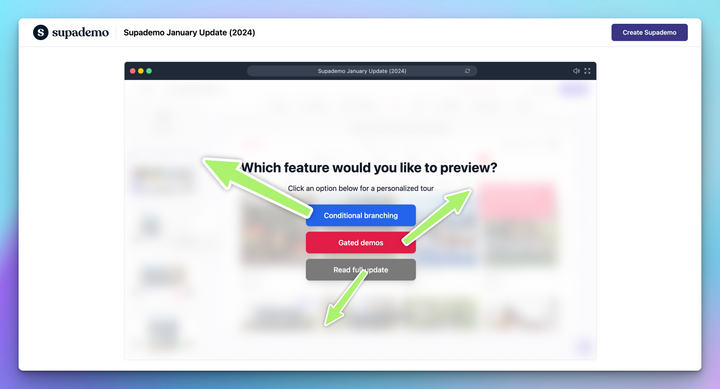Ever opened an app, got hit with five pop-ups, three tooltips, and a glowing “Start here” button, and still had no idea what to do next?
You’re not alone. According to a customer onboarding report by Wyzowl, 8 in 10 users say they’ve deleted an app because they didn’t know how to use it.
Ouch. That’s the danger of launching a great product without a great product tour.
Because first impressions aren’t just important—they’re everything. And in the world of SaaS, your tour is often the only “sales call” a self-serve user will ever see.
In this guide, we’re going to show you how to build product tours that don’t just guide—but convert 7x better. Let's get into it.
TL;DR
- Use product tours not just for onboarding but to boost adoption, reduce churn, and support sales and customer success at scale.
- Want higher conversions? Keep your tours short, interactive, and focused on one clear outcome.
- Different users need different tours—think onboarding checklists, tooltips, feature walkthroughs, or self-serve demos.
- Supademo makes it easy to create, share, and update interactive product tours across your entire funnel without writing a single line of code.
What is a product tour?
A virtual product tour is a walkthrough that introduces users to a product’s interface, key features, or workflows, typically during onboarding. Think of it as a digital guide that answers “Where do I click?” and “What does this do?” without human support.
But great product tours do more than just point out buttons. They teach by showing, helping users experience the core value of a product within their first few interactions.
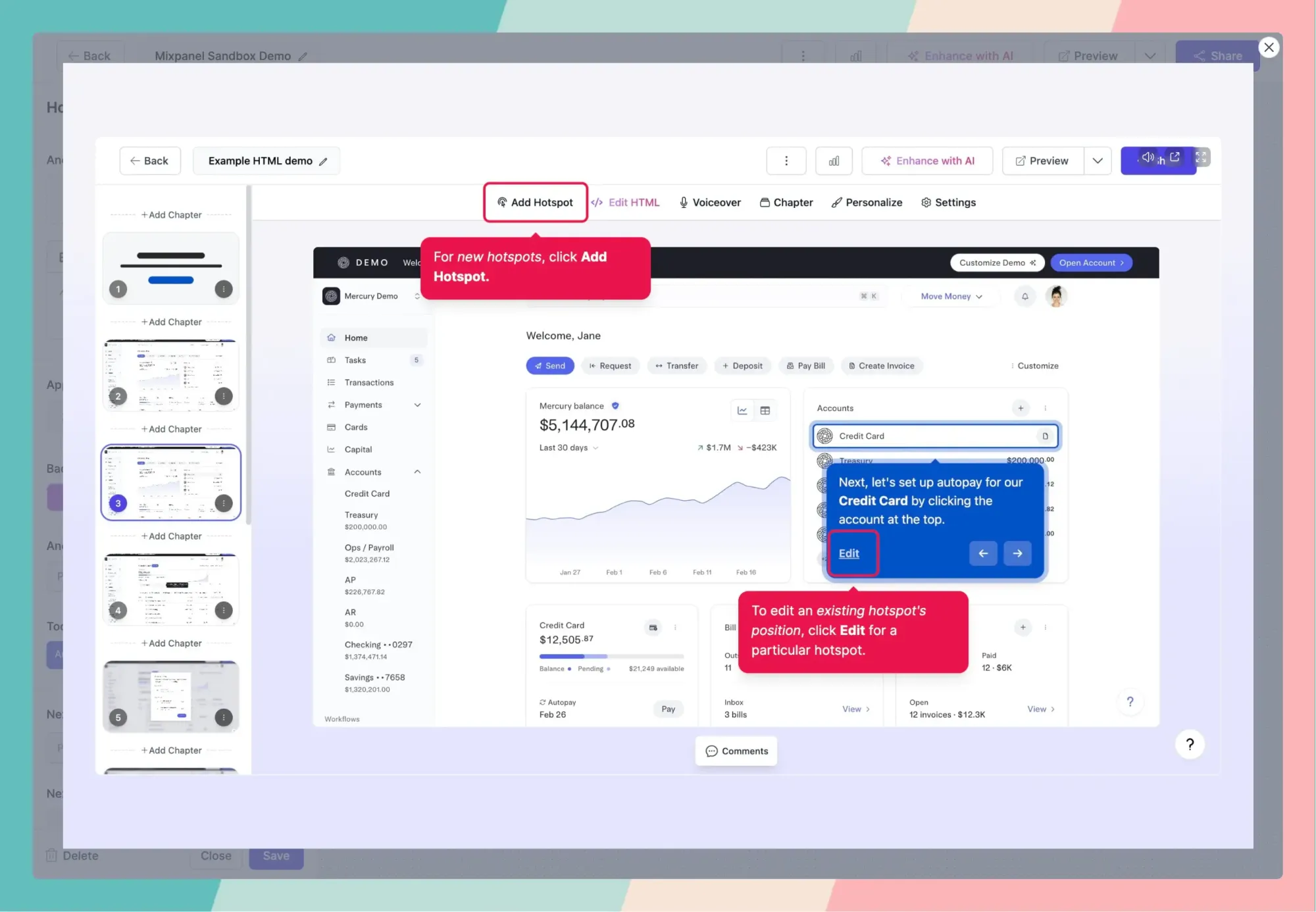
Why are product tours important?
Product tours aren't just “nice to have” but a core part of user onboarding, adoption, and long-term retention. Here's why it's important:
1. First impressions matter—more than you think
According to Wyzowl, 63% of customers take a company’s onboarding experience into account before deciding to make a purchase. If your product tour doesn’t help users quickly understand the value you offer, you’re likely losing them at the door.
A frictionless tour lets users explore at their own pace, while subtly guiding them toward actions that drive activation. Think: showing how to create a project, send an invite, or complete a setup flow. When users succeed early, they stick around longer.
2. Help users reach “aha” faster
Every product has a moment where things just click—the “aha!” moment. For some, it’s sending their first invoice. For others, it’s seeing a real-time dashboard populate with data.
The job of a product tour is to guide users to that moment without overwhelming them.
This is where interactive, use-case-based demos help. They allow teams to build focused, contextual walkthroughs that highlight key value props without overloading the user.
3. Reduce support tickets
A well-designed tour reduces support tickets by answering common questions before they’re asked. Instead of explaining basic tasks like “How do I integrate this with Slack?” 50 times a week, your CSM team can focus on higher-value conversations.
ReelDx, a platform for sharing medical videos and case studies, replaced time-consuming trainings and 1:1 screen shares with Supademo product tours. The result: 100+ clinicians, students, and faculty learned the product on their own and saved 12+ hours each month that was spent answering repetitive questions.
“For a really long time, we’ve been looking for an easy onboarding solution that meaningfully allows users to try the platform. We explored a lot of solutions, but none were as easy as Supademo."
~ Rob Humbracht, ReelDx CEO
4. One tour, multiple touchpoints
Product tours aren’t limited to onboarding. They can be embedded across the customer journey:
- In sales demos, to shorten buying cycles.
- In help docs, to provide visual context.
- In feature announcements to boost adoption.
- In customer training, to scale education.
Supademo makes it easy to repurpose a single product tour across all these use cases. This scalability turns a one-time walkthrough into a versatile growth tool.
5. The silent driver of revenue
Behind every successful self-serve product-led motion is a tour doing the heavy lifting. For PLG companies, the product itself is the salesperson. And if the product doesn’t explain itself well, it doesn’t sell.
Tours help users convert themselves—no sales call required.
What are the different types of product tours?
Depending on your user journey, you’ll need different tour formats to meet users where they are—whether it’s their first interaction or their fiftieth. The best teams don’t rely on a single type of tour. Instead, they mix and match to guide users through every stage of the product experience. Let's explore different types of tours:
1. Onboarding tours
This is the most common type of product tour, and for good reason.
Customer onboarding tours introduce new users to the basics of your product. They typically walk users through key features, setup steps, or must-do actions in the first session. These tours work best when they’re short, contextual, and action-oriented.
This is an onboarding tour we created for Supademo (using our own tool) — built to guide new users through just a few essential steps. It’s lightweight by design, helping users take action without feeling overwhelmed.
2. Feature tours
A user who’s already activated doesn’t need another full intro. What they need is help using new or underused features.
Feature tours zoom in on a specific capability—like how to automate a report or set up role-based access—and show users exactly how it works. These are perfect for driving feature discovery, reducing confusion, and reinforcing product value post-onboarding.
You can trigger them contextually, like showing a Supademo tour when someone clicks on a new tab or visits a rarely used section. Here's how feature tours look in action:
3. Self-serve demos
For product-led companies, interactive self-serve demos are the new sales pitch. They allow prospects to explore the product at their own pace without needing a rep on the call.
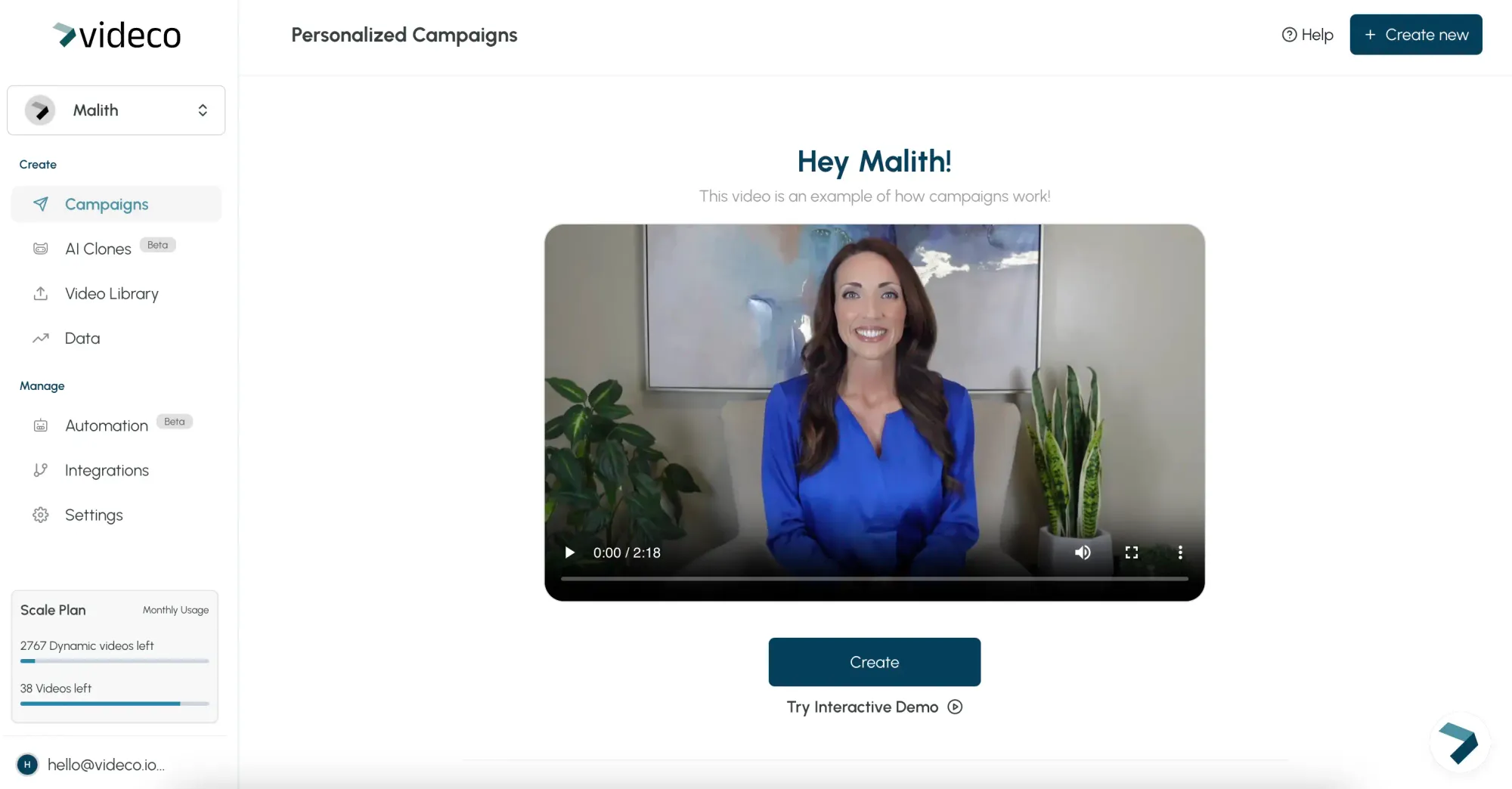
Compared to static screenshots or slide decks, these demos provide a hands-on feel of the product experience. And they convert better too. beehiiv was able to generate thousands of signups, resulting in around $10,000 in revenue from self-serve customers—more than enough to cover their investment in Supademo.
This format works especially well for top-of-funnel engagement and inbound traffic that isn't quite ready to commit but wants a quick taste of what your product can do.
4. Contextual tooltips
Not every tour needs to be a step-by-step tour.
Sometimes, a well-timed tooltip can do the job, especially for advanced users. These micro-tours appear when users hover over or interact with specific UI elements. They’re useful for bringing up advanced features or explaining functionality right when it’s needed.
For example, if a user tries to export data for the first time, a tooltip can explain file formats or share limitations—avoiding a support ticket down the line.
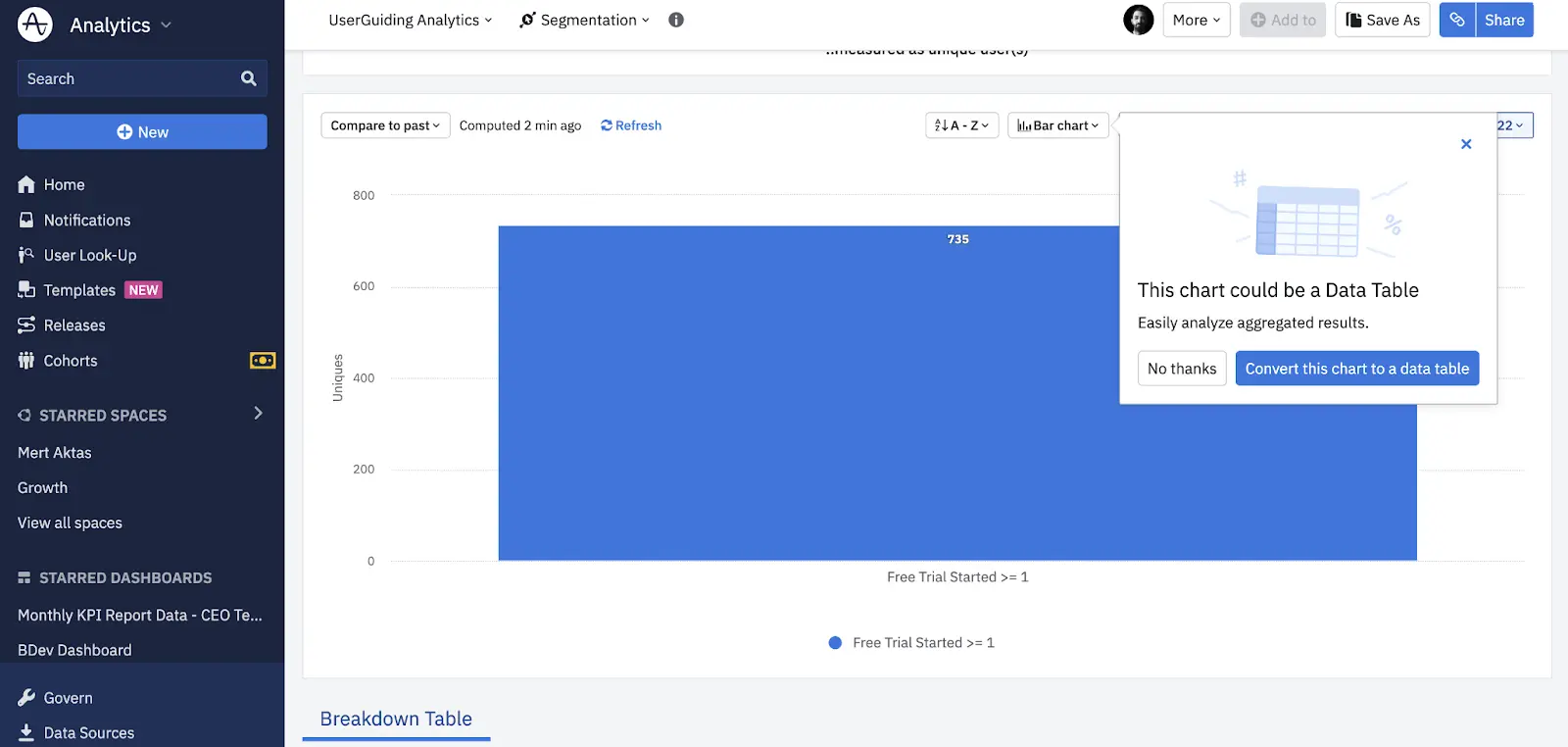
5. Educational tours
Your CS team can’t be everywhere. That’s why educational product tours are essential for scaling user enablement, especially for complex or enterprise-grade tools.
These tours often include scenario-based tours, process flows, and multi-step guides that teach users how to complete real tasks.
With Supademo, CS teams can use Showcases to bundle these into a demo center that is easy to update as the product evolves, without engineering.
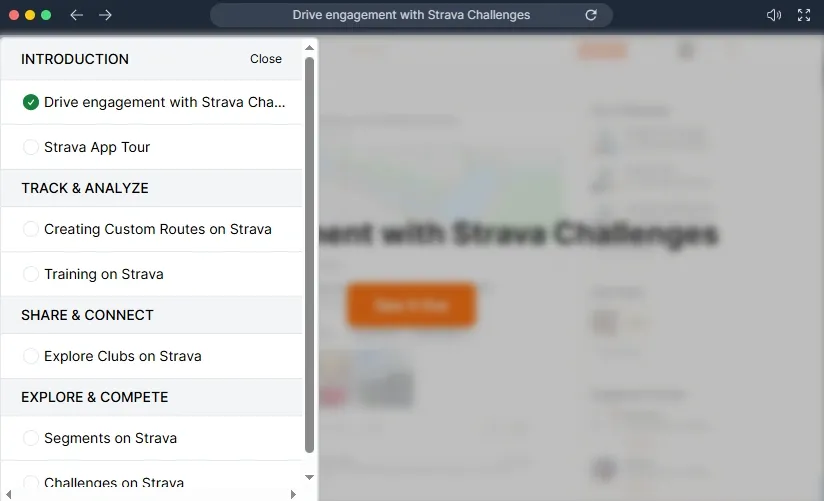
How do you create a virtual product tour that actually converts?
A product tour that converts isn’t just a walkthrough. It’s a carefully designed experience built around the user's intent, timing, and desired outcomes. High-performing teams focus on designing conversion journeys. Here’s how:
1. Start with one clear goal
The biggest mistake? Trying to do too much. Before you build anything, decide on one outcome: Do you want the user to complete the setup? Explore a feature? Sign up for a trial?
Ramli John, Founder of Delight Path explains the biggest onboarding mistake is skipping the groundwork and slapping on a generic product tour. Before adding guides or emails, define success, the user’s JTBD, the minimum steps, drop-offs, and learning styles.
Every screen, tooltip, and call-to-action in your tour should support that single goal. With Supademo, you can create highly targeted demos for different personas or entry points, ensuring your tour feels relevant from the first click.
2. Make it interactive, not instructional
No one likes being told what to do. But users do like being shown what’s possible—especially when they can click through at their own pace.
Interactive tours consistently outperform static ones. According to Chameleon, self-serve tours see a 123% higher completion rate than regular demo videos. Why? Because they let users do instead of just watching.
3. Keep it short, contextual, and smart

Your product tour isn’t the place to show everything. Prioritize the 2–3 steps that deliver the most value and reduce friction at that stage of the journey.
A best-in-class tour is:
- Under 3 minutes.
- Personalized to user behavior or persona.
- Skippable but recoverable.
Supademo’s conditional logic and branching options let you build smart tours that adjust based on user inputs. For example, a first-time user can get a basic setup flow, while a returning one sees advanced use cases.
4. Position the value, not the feature
Users don’t care about your buttons or interface. They care about solving problems.
Instead of walking users through what the feature is, show why it matters. For example, don’t say, “This is the dashboard tab.”
Say, “This dashboard shows real-time sales, so you never miss a revenue spike.”
5. Test, measure, repeat
Your first tour won’t be perfect, and that’s okay. What matters is iteration.
- Track completion rates, drop-off points, and time spent.
- Then adjust messaging, steps, or flow accordingly.
Built-in analytics help you understand how users interact with each step—what grabs attention, where they drop off, and which flows perform best. That way, you can iterate quickly and improve your tour without extra dev work.
What tools can you use to build a product tour?
Creating a high-converting product tour starts with choosing the right tool. Here’s a breakdown of the 3 widely used product tour software, their strengths, and what makes each of them stand out:
1. Supademo
If you’re looking for a no-code, quick-to-share solution, Supademo is worth your attention. With features like conditional logic, multi-step flows, and easy embedding, it's designed to scale across onboarding, sales, and support.
Spare, a platform powering over 20 million rides globally, faced challenges in creating and maintaining product demos across sales, marketing, and internal communications. By implementing Supademo, they accelerated deal value by over $1 million and saved more than 50 hours monthly in their pre-sales organization. This proves just how powerful a streamlined tour-building tool can be.
What are Supademo's pros & cons?
✅ A cost-effective solution compared to other high-priced SaaS demo platforms.
✅ Auto-play features and interactive hotspots boost user engagement within demos.
✅ The support team is highly responsive, open to feedback, and consistently works to improve the platform.
❌ Can become slow with a high number of steps, impacting performance.
❌ Lacks functionality to track individual employee training progress.
How much does Supademo cost?
Pricing starts at $27 per month, but there's a Free plan as well.
2. Appcues
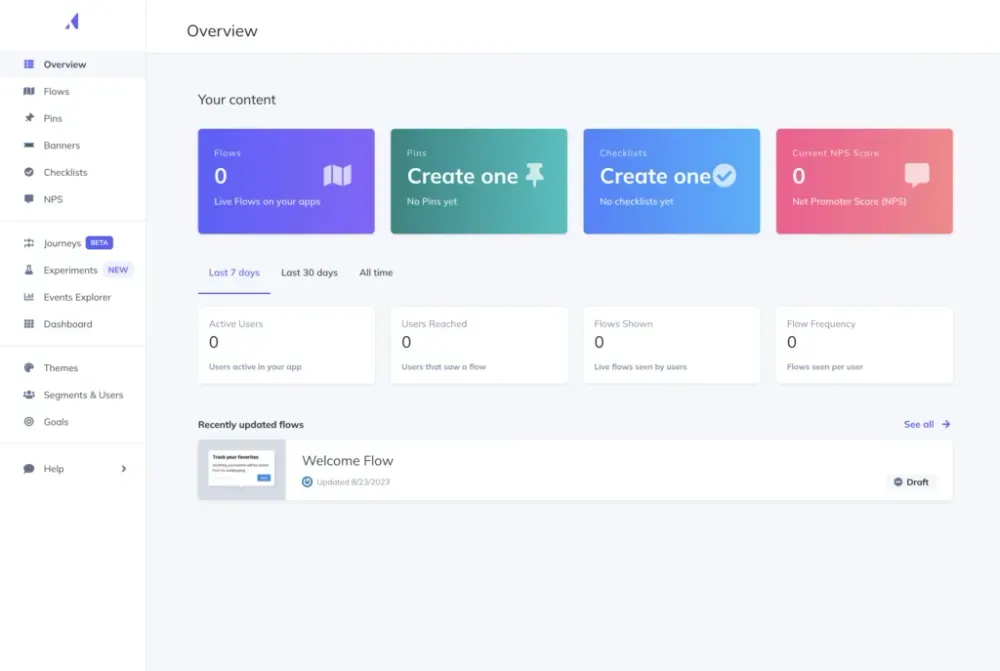
Appcues gives product and CS teams the ability to create targeted, branded tours using a visual editor. Its Flow Builder lets you craft multi-step onboarding sequences, feature announcements, and surveys within the app.
But where Appcues does great is segmentation. You can trigger different tours based on user behavior, lifecycle stage, or properties pulled from your CRM or analytics tools.
What are the pros and cons of Appcues?
✅ Wide range of templates and messaging types to choose from.
✅ Intuitive drag-and-drop interface makes it easy to build flows quickly.
✅ Fast and responsive customer support team.
❌ The audience builder and user lookup features can be slow to load.
❌ Mobile support lacks screen directories and functional launchpads.
❌ Testing links and debugger tools are inconsistent, especially on mobile.
How much does Appcues cost?
Pricing starts at $300 per month.
3. Userpilot
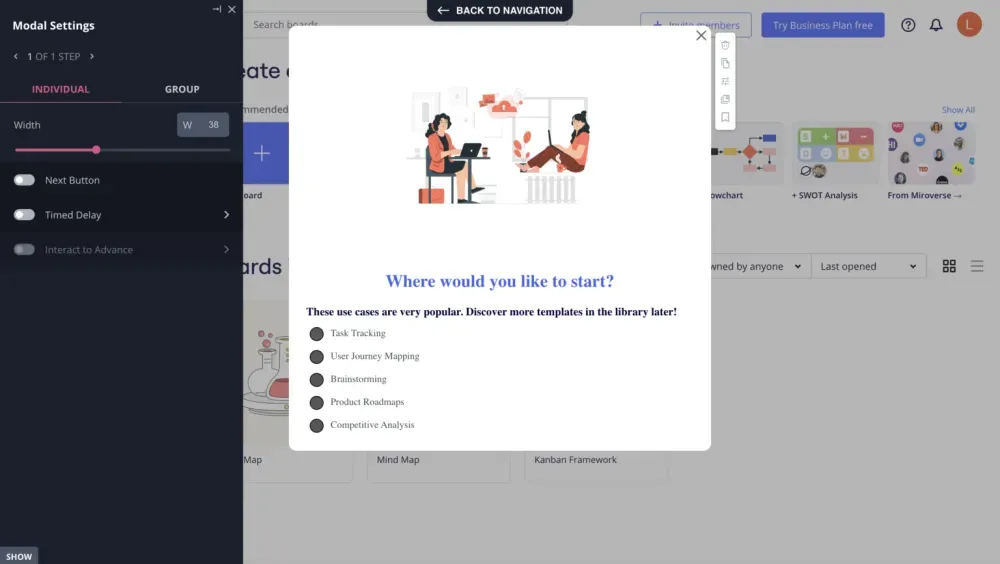
Userpilot is designed to help you build contextual, behavior-driven product experiences—especially for SaaS onboarding. It requires minimal setup and no coding. You can also trigger tours based on in-app actions (e.g., “user clicked X but hasn’t completed Y”) and show different experiences to different personas or company sizes.
The tool supports checklists, tooltips, and modals, all tied to your product analytics.
What are Userpilot's pros & cons?
✅ Supports interactive walkthroughs, tooltips, banners, and NPS surveys.
✅ Session recording and event tracking offer additional UX analytics capabilities.
✅ Rich customization options support branded onboarding and feature tours.
❌The UI can feel clunky or unintuitive in parts, especially during setup.
❌ Event listeners and flow triggers can be inconsistent or delayed.
❌ Visibility settings and audience targeting can be difficult to configure.
How much does Userpilot cost?
Pricing starts at $249 per month.
5 Real-world examples of great product tours
Great product tours don’t just “show you around.” They help users experience the product’s promise within the first few clicks. Here are some interactive product tour examples of brands giving exceptional product tours:
Grammarly
Grammarly’s onboarding experience is subtle yet powerful. When you sign up, you’re immediately prompted to write something. Instead of explaining every feature upfront, Grammarly guides you as you type—offering suggestions, corrections, and quick tips in real-time.
This “show, don’t tell” approach helps users connect with the product’s core value (writing better, faster) within minutes.

It’s an excellent reminder that product tours don’t always need to be linear. Contextual guidance, layered over real user actions, can be far more compelling than a traditional walkthrough.
Simple Testimonial
Simple Testimonial, a video testimonial platform, wanted a lightweight way to help users understand key features without overwhelming them. They built an interactive product tour focused solely on the “Feedback Forms” feature, guiding users through the steps with clear, visual pointers and inline context.
The result? A 9-step, linear product tour that acts as both a help center resource and a cold outreach asset. By keeping it brand-aligned and action-driven, they turned a basic feature overview into a multi-use engagement tool that supports onboarding, discovery, and lead generation.
Turo
Turo, a peer-to-peer car-sharing platform, needed a way to train new users on how to book a vehicle through their mobile app. By building an interactive product tour that walked users through each key step—from selecting a vehicle to confirming the reservation—they streamlined onboarding and reduced first-time user drop-off.
This wasn’t just a UX polish—it was a training tool in disguise. By layering in subtle animations like clicks and scrolls, and ending with a clear CTA, Turo used their tour to drive clarity, confidence, and conversion across their onboarding journey.
Senja
Senja asks new signups for their business type, then immediately shows a personalized virtual product tour. Each Showcase mirrors Senja’s four product areas (collect, manage, share, automate), so users see only what matters right after signup.
This turns onboarding into a starter kit: bite-sized demos, one outcome per step, and each demo shareable on its own. The result is less overwhelm and a faster path to the first meaningful action.
RB2B
RB2B, a website visitor identification platform, uses a virtual product tour to handle heavy demo demand without booking calls. Prospects can click through a polished, on-demand walkthrough that shows the core workflow and answers common questions.
“Supademo has allowed us to deliver the same high-quality demos and product tours as we would have in person...” ~ Robb Clarke, Head of AI.
The result? 60+ hours of sales calls saved in 30 days, with consistent, high-quality demos that let buyers evaluate at their own pace.
What are common product tour mistakes to avoid?
Even with the best intentions, product tours can fall flat if they're built without user behavior, context, or business goals in mind. Here are some mistakes to avoid:
Overloading users with information
Trying to explain every feature in one tour is a fast way to overwhelm users and increase drop-off.
Ignoring segmentation and personalization
Not all users have the same goals. Yet, many product tours treat new users, power users, and trial users the same.
Making tours mandatory or hard to exit
Forcing users through a rigid, non-skippable tour almost always backfires. It turns curiosity into frustration. Great product tours respect user autonomy.
Bonus: How to convert product demos into product tours?
Now that you've stayed till the end, here's a little bonus for you:
Already have static demos or demo videos? Here’s how you can turn your existing demos into interactive tour experiences that users actually engage with.
How to get started with your first product tour?
If you’ve made it this far, chances are you’re looking for a product tour tool that’s both easy to use and budget-friendly.
That’s where Supademo comes in—a fast, flexible platform designed for teams that want results, not roadblocks.
Supademo lets you create interactive product demos in minutes. No code. No dev dependency. Just record your flow, customize it, and share it anywhere—on your website, inside your app, or in that next investor pitch deck.
And the best part? You don’t have to spend a cent to try it out.
Test-drive Supademo for free—no signup required.
FAQs
What is a virtual product tour, and how is it different from an in-app tour?
A virtual product tour is a clickable, hosted walkthrough that lives outside your app. It’s best for pre-signup education and sales enablement. An in-app tour runs inside your product for signed-in users and focuses on activation and feature adoption.
How long should a virtual product tour be?
Keep it under 3 minutes with 6–8 steps. Use short, action-first copy, visible progress, and one clear outcome. Make it skippable, allow going back, and place the primary CTA right after the “aha” moment.
How do I measure if my product tour is working?
Track start rate, step-through, completion, CTA clicks, and the key action that follows the tour. Watch time-to-value and related support tickets. Run A/B tests on step count, copy, and triggers to lift completion and the targeted action.
Where should I place a virtual product tour on my website and in-app?
Homepage hero, pricing, product and feature pages, comparison pages, and help docs. In-app, use empty states, first-run checklists, and feature launch modals. Add a clear Start tour CTA and track starts, completes, and CTA clicks
What is the best virtual product tour software for SaaS?
Popular options include Supademo, Appcues, and Userpilot. Supademo is best for no-code virtual tours across the funnel. Appcues is strong for in-app flows with segmentation. Userpilot fits behavior-driven onboarding with checklists and tooltips.


